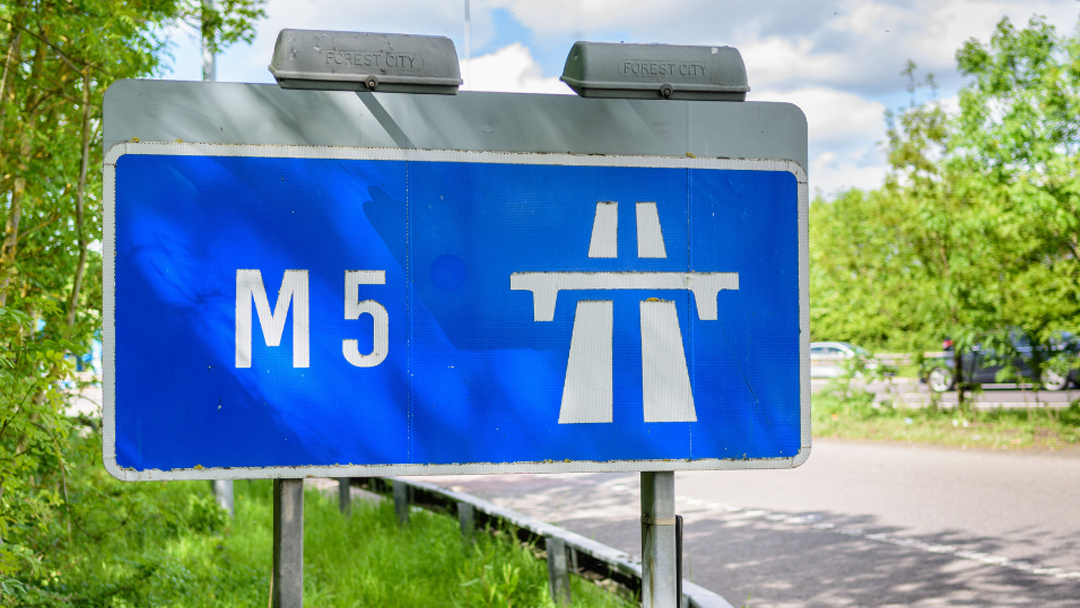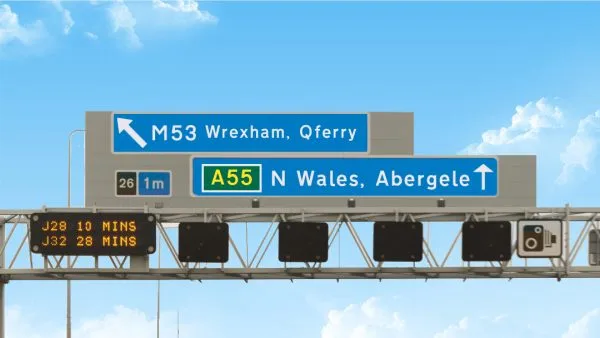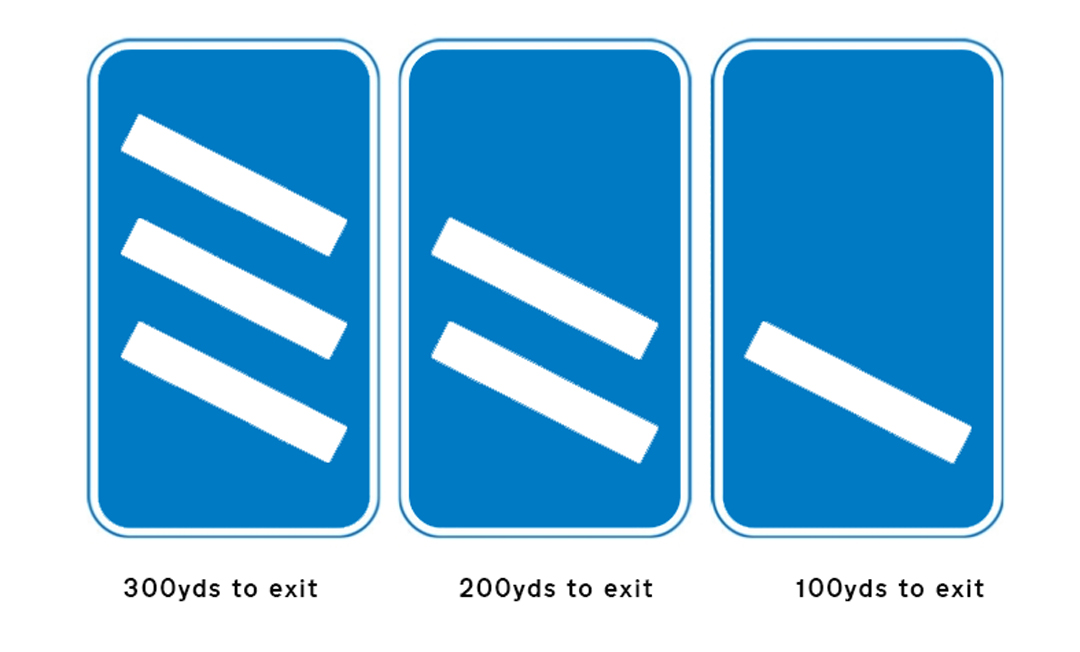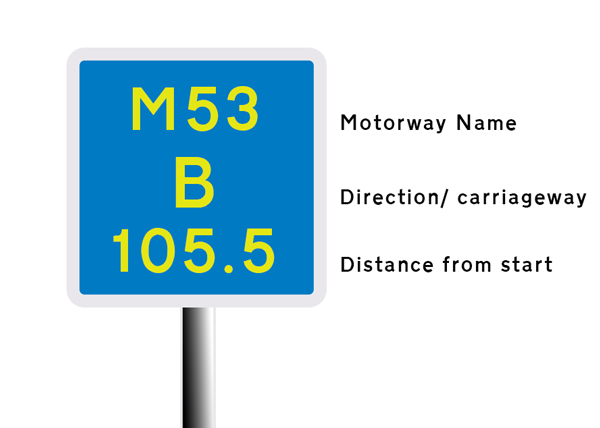Motorway Signs
Guide to all the signs you will find on the motorways and what they mean
UK Motorway Signs
You’re getting ready for your theory test and driving lessons—what an exciting journey! There can be a lot to take in.Your probably asking why are blue motorway signs blue or what does the end of motorway sign look like. Many experienced drivers are unsure of things like driver location signs, so read on and become an expert on motorway signs and their meanings.
One of the key aspects is understanding the different road signs you’ll encounter while driving.
As a learner, you may get the chance to use the motorway with a qualified driving instructor.
Knowing the road signs is crucial because reacting quickly to them makes you safer while driving.
Plus, having this knowledge will boost your chances of acing your theory test. Dive in now to discover the unique features that set motorway signs apart from the rest.
Maybe your reading this because you have a theory test coming up or maybe you are training to become an ADI , about to take an extended driving test, or just brushing up on your knowledge, whatever your reason this easy to read article will explain things clearly.
Blue Motorway Signs
Motorway signs differ from regular road signs because they have blue backgrounds and white text, making them easy to see and read from further away.
Their oversized design allows for quick comprehension of vital information, even when traveling at high speeds.
In the UK, these iconic blue motorway signs are essential for directing motorists on their journeys, providing them with the clarity needed for driving at high motorway speeds with confidence.

Start and end of motorway signs
As you approach the motorway, there will be a sign with a blue background and a white image of a dual carriageway beneath a bridge to indicate your entrance. You’ll also see directional signs on the nearby roads guiding you to the motorway, clearly marked in blue.
When you reach the end of the motorway, you’ll see a sign like the entrance one, but it will have a red diagonal line across it, indicating that you’re moving onto a different road.
As you approach a service area, watch for a sign that reads End of motorway regulation. This indicates that the services are just off the motorway and the driving rules that were in effect on the motorway no longer apply.

Junction Signs on Motorways
As you approach your motorway exit, junctions play a crucial role in your journey. Keep an eye out for exits that feature white numbers on a black background, which you can also find on maps for easier navigation.
It is crucial to keep track of your junction number and move into the left lane early to make your exit safely. Stay alert as you navigate junction numbers, as they typically follow a sequential order, but keep in mind that some may be missed out in ready for planned junction developments.
If you miss your turn off then you just need to carry on until you reach the next junction, you will be able to leave the motorway and either go back to the last junction or re plan your route.
Planning ahead at a motorway junction is a bit trickier than on regular roads since traffic is usually moving faster and you might need to move through several lanes. If you miss your exit, you’ll just have to keep going until the next one, which often means either backtracking on the motorway or taking some slower back roads to get back on course.
This detour can lead to extra travel time, more fuel used, and a lot of stress, but you can avoid that by staying alert and keeping an eye on the road.
Motorway Service Area Signs
When you’re on the road both you and any passengers can become tired, it’s time to think about stopping for a break.
Whether you’re feeling a bit tired, hungry, or just need a break, finding the nearest service station is key. Luckily, our UK motorways have clear blue signs making it easy to spot these essential stops.
Not only do they point out the closest service stations, but they also show which ones are coming up next, so you can decide if you want to pull over now or keep going until the next service station. If long drives are part of your routine, you’ll soon figure out your favourite stopping places.
Plus, if you want to know where to take the best breaks, there are even a web site evaluating motorway services across the UK.
Motorway Countdown Markers
As you get closer to an exit on the motorway, you’ll notice countdown markers that help keep you on track. These countdown signs are the same as the ones you will have seen on dual carriageways; the difference is the background colour is blue rather than green. When you see three white stripes against a blue background, it means you’re about 300 yards or 275 meters away from the junction.
Two stripes indicate you’re 200 yards out, and a single stripe is your heads-up that you have 100 yards to go. These signs are super handy for knowing when it’s time to slide into the left lane to prepare for your exit.

Motorway Service Area Signs
When you’re on the road both you and any passengers can become tired, it’s time to think about stopping for a break.
Whether you’re feeling a bit tired, hungry, or just need a break, finding the nearest service station is key. Luckily, our UK motorways have clear blue signs making it easy to spot these essential stops.
Not only do they point out the closest service stations, but they also show which ones are coming up next, so you can decide if you want to pull over now or keep going until the next service station. If long drives are part of your routine, you’ll soon figure out your favourite stopping places.
Plus, if you want to know where to take the best breaks, there are even national rankings evaluating motorway services across the UK.;
Driver location signs
Distance Marker Posts
If you find yourself needing to stop on the motorway for any reason usually a breakdown or a puncture, it’s important to know about driver location signs or distance marker posts that assist breakdown and emergency services in pinpointing your location.
These small blue signs, with yellow lettering, are placed every 500 meters along motorways and certain A roads. In the event of a breakdown, an incident, or if you witness a vehicle in distress, you can contact the appropriate authority and share the location provided by the distance markers.
The first number indicates the road you are on, while the second line, marked with an A or B, signifies the direction of your travel, and the final line reveals how far along the motorway you are. If you happen to forget what each part means, don’t worry; the operator will be able to assist you quickly using the sign details.

Motorway Speed Limit Signs
Motorways have speed limit signs just like regular roads, letting you know what speed you can legally go, if the conditions are suitable. You’ll spot these signs, which have a black number in a red circle, on gantries above the road, along the central reservation, and on the left side. Sometimes, you’ll come across variable speed limits that change based on road conditions; these are usually temporary and shown on gantries too.
The standard speed limit for motorways is 70 mph,and is usually shown as a red circle around a black 70 on a white background, rather than the national speed limit sign which you would find on a non motorway dual carriageway, the reason the national speed limit sign is not used on motorways is due to speed limit variations for different classes of vehicles, such as HGV’s.
Keep an eye out for spots with lower speed limits, usually set up to cut down on accidents or keep workers safe during roadwork. Also it is wise to keep in mind that the speed limit is the maximum and not a target, you will often need to adjust your speed to suit adverse weather or other traffic conditions. Your stopping distances will significantly increase at higher speeds.
You might notice some advisory speed limit signs flashing amber lights—these aren’t legally binding, but it’s a good idea to pay attention since they highlight current road conditions and potential hazards. Just a heads up, if you see a temporary illuminated sign with a red circle around the speed limit, that one is legally enforceable.
Smart Motorways
Temporary signs are increasingly common on motorways, particularly on smart motorways where they are prominently displayed usually on overhead gantries . These signs form an integral part of a smart traffic management system that relies on advanced cameras and sensors to monitor real-time road conditions and incidents, enabling computers to update the signage automatically with their distinctive colors and shapes.
For instance, a closed lane will be marked by a red ‘X’ overhead, and if there’s a speed limit reduction, it will appear as a number enclosed in a red ring.
In addition to these smart systems, variable message signs also play a crucial role, having served drivers long before the advent of smart motorways. Positioned on tall posts to the side of the road, these signs convey essential text messages to alert motorists to issues such as traffic jams, adverse weather conditions like fog, or ongoing road works and improvement activities.
Areas we cover
Abergele | Amlwch | Anglesey | Bangor | Barnsley | Caernarfon | Colwyn Bay | Conwy | Denbigh | Flint | Holyhead | Holywell | Llandudno | Prestatyn | Rhyl | Wrexham | Telford | Automatic lessons Colwyn Bay | Automatic Driving Lessons Rhyl | Automatic Lessons Barnsley
Driving Lessons
